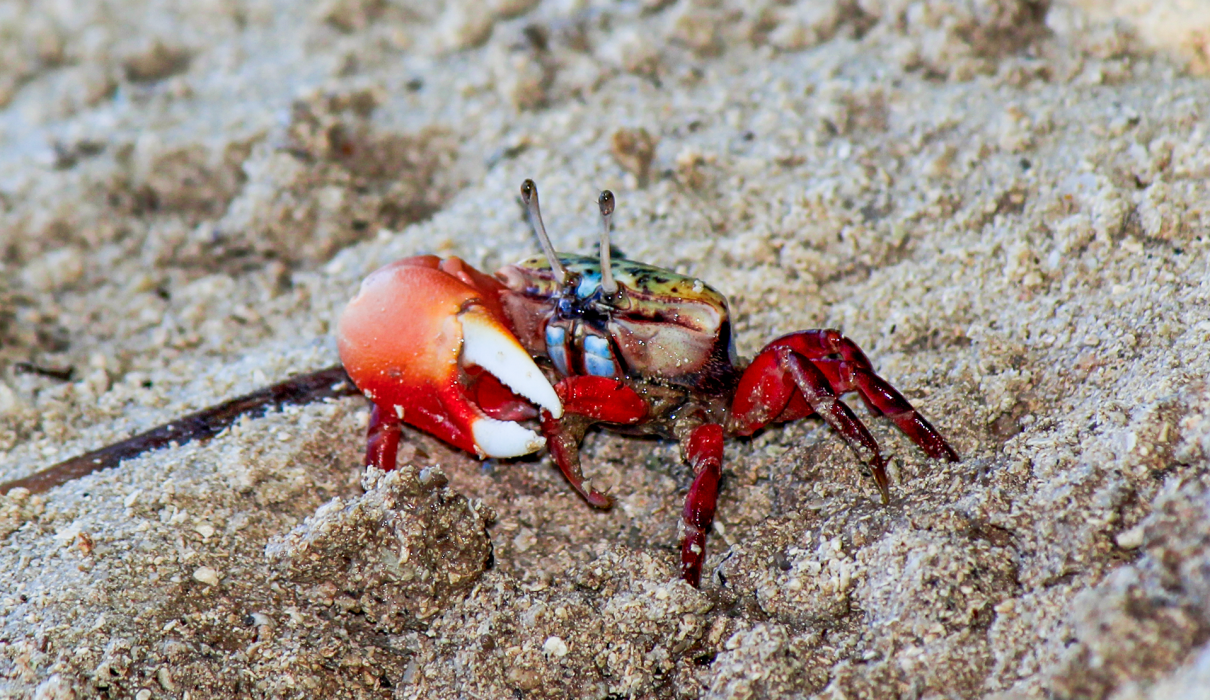In the serene coastal landscapes of the Maldives, where land, beach, and mangrove areas converge, a hidden gem reveals itself—the Tetragonal Fiddler Crab (Gelasimus tetragonon). As a witness to the diverse crustacean life in these regions, I’ve been captivated by the beauty and unique behaviors of this small but remarkable fiddler crab species. Join me on a journey as we delve into the fascinating world of the Tetragonal Fiddler Crab, exploring its characteristics, habitats, and the challenges it faces in the ever-changing landscapes of the Maldives.
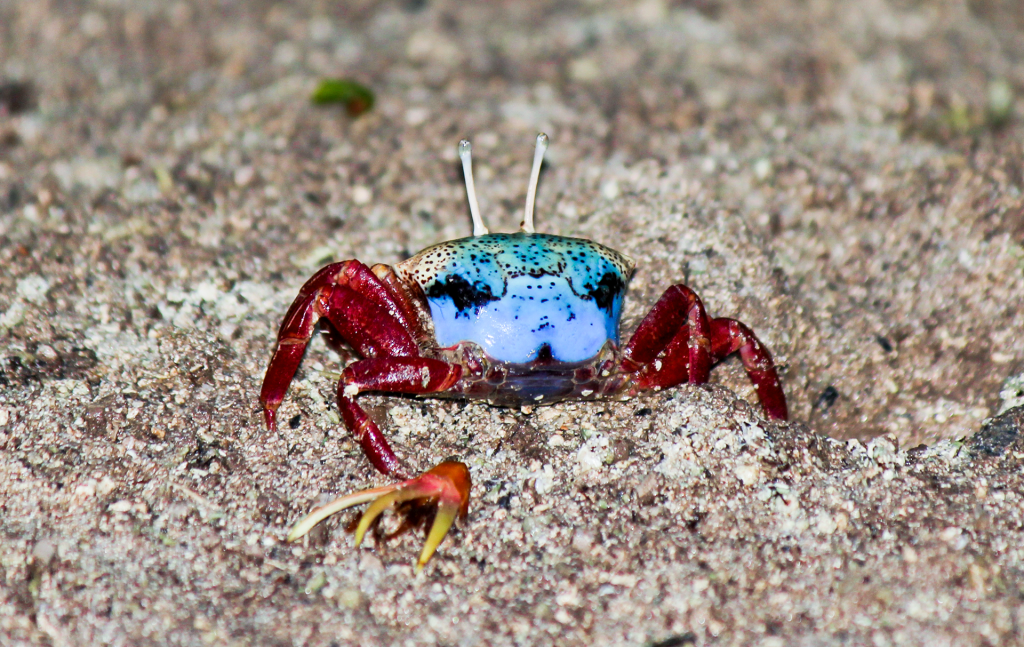
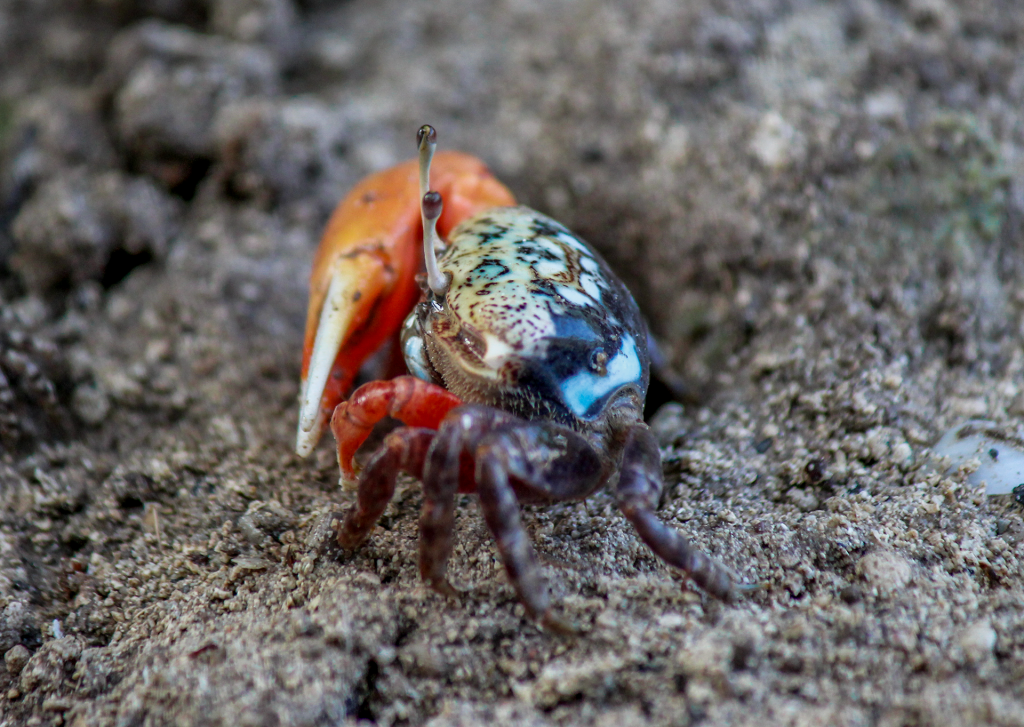
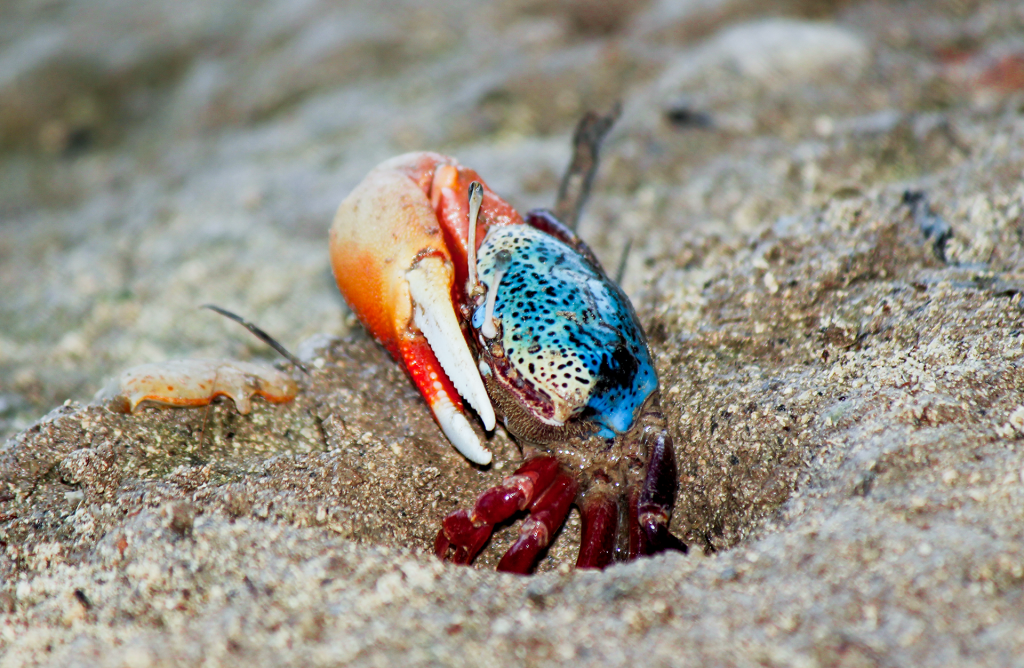
Species Identification:
Scientifically known as Gelasimus tetragonon, this small fiddler crab is a resident of the tidal zones of mangrove forests and muddy marshes in South Asia, the Indo-West Pacific, and the East coasts of Africa. Recognized by its characteristic sexual dimorphism, the males of this species boast an extreme difference in the size of their claws—a feature that plays a crucial role in their reproductive and territorial behaviors.
Taxonomy:
- Kingdom: Animalia
- Phylum: Arthropoda
- Class: Malacostraca
- Order: Decapoda
- Family: Ocypodidae
- Genus: Gelasimus
- Species: tetragonon
- Initial determination: (Herbst, 1790)
Distribution and Habitats:
The Tetragonal Fiddler Crab thrives in mangrove zones, creating intricate burrows in the sand and mud during low tide. I’ve had the privilege of encountering these fascinating creatures in various Maldivian locations, including Kaafu Huraa Mangrove area, Laamu Hithadhoo, Noonu Maalhendhoo, and even in the capital city of Malé after the land reclamation of Hulhumale Phase 2.
After the land reclamation, about four months later, I spotted fiddler crabs in Hulhumale for the first time. Previously, they weren’t seen here, with the closest known habitat being in Kaafu Huraa.
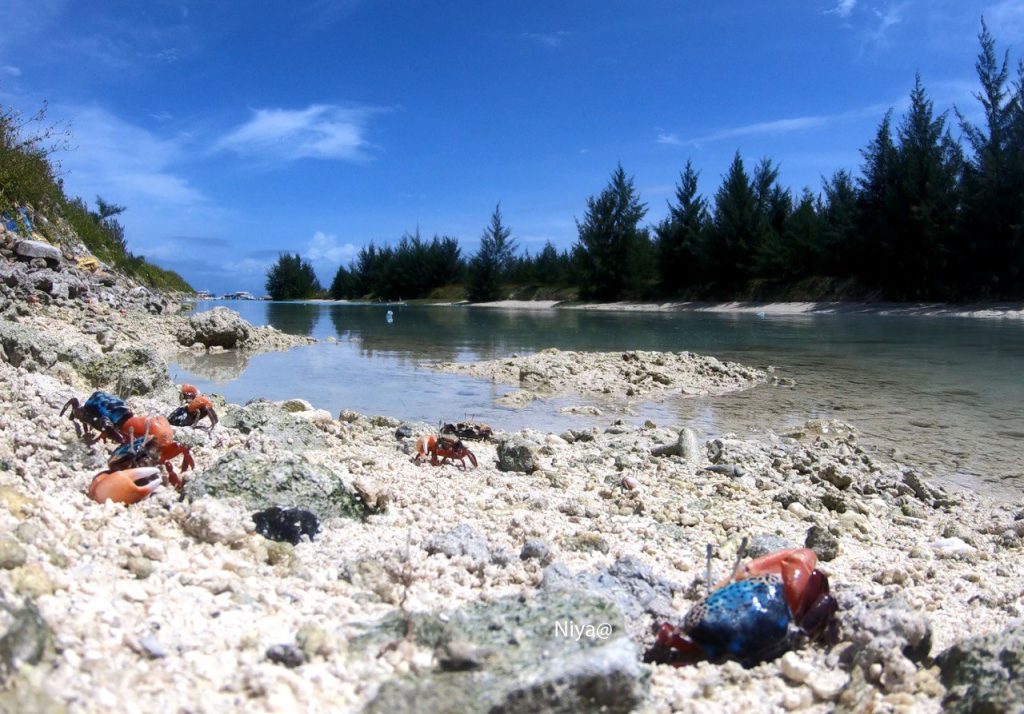
Fiddler crabs have a fascinating life cycle. They start as larvae in the plankton, gradually maturing through multiple molting stages. The older larvae, called megalopa, are a stage before adulthood. It’s possible that larvae from nearby areas like Huraa were transported to Hulhumale by ocean currents, leading to the establishment of fiddler crab colonies.
However, their presence in Hulhumale was short-lived. After a few months, the fiddler crab population disappeared following the installation of concrete revetment. This change likely disrupted their habitat, making it unsuitable for their survival despite their initial migration and settlement.
Physical Characteristics:
Males of the Tetragonal Fiddler Crab exhibit a striking feature—while one claw remains small and functional, the other becomes disproportionately larger. This oversized claw, known as a “chela,” serves multiple purposes. It is used for scooping sediment from the substrate, which is then sifted through to extract edible detritus. Additionally, this large claw becomes a tool for territorial battles and attracting potential mates.
Life Cycle and Reproduction:
These charismatic crabs, like all crustaceans, undergo multiple moults in their lifetime. If a male loses its larger claw in a fight, the smaller claw on the opposite side begins to grow larger, and the lost claw regenerates into a new normal-sized one. Interestingly, the claws best suited for fighting are not the same as those best suited for attracting females through waving displays, creating an evolutionary enigma.
After mating, the female Tetragonal Fiddler Crab carries her eggs in a mass on her abdomen, retreating into her burrow for protection. After a gestation period of two weeks, she emerges and releases the eggs into the receding tide. The tiny larvae, still in their planktonic stage, embark on a journey in the open ocean for another two weeks before settling in a new intertidal zone.
Conclusion:
In the midst of mangrove zones and tidal habitats, the Tetragonal Fiddler Crab emerges as a symbol of resilience and adaptation. As these fascinating creatures navigate the challenges presented by human-induced changes, it becomes our responsibility to appreciate, understand, and protect the delicate balance of coastal ecosystems in the Maldives.
Join us on a journey of discovery and conservation as we explore the wonders of the Tetragonal Fiddler Crab in the vibrant landscapes of the Maldives.


